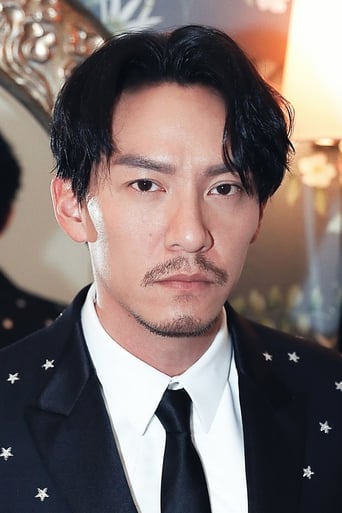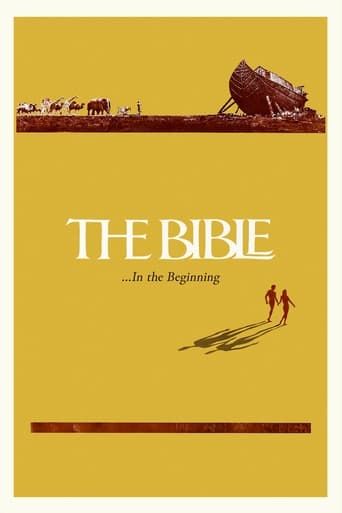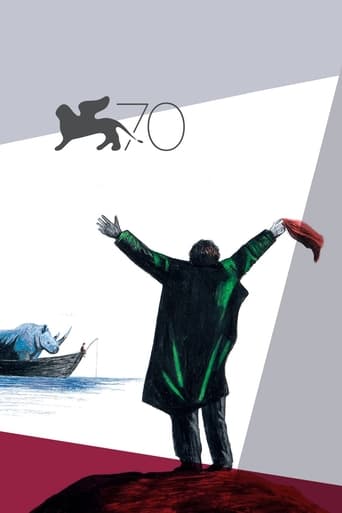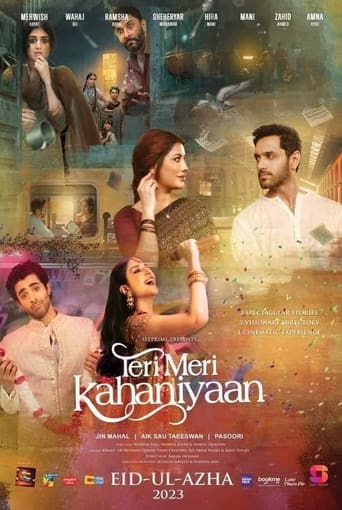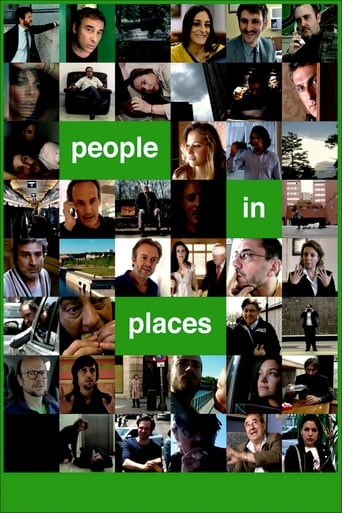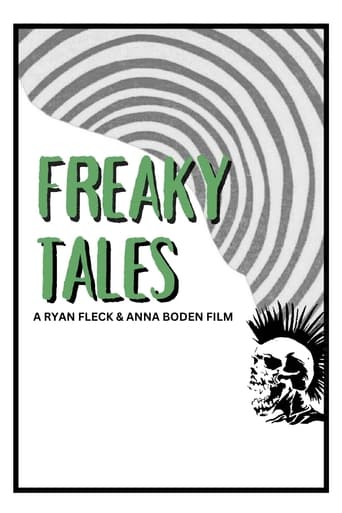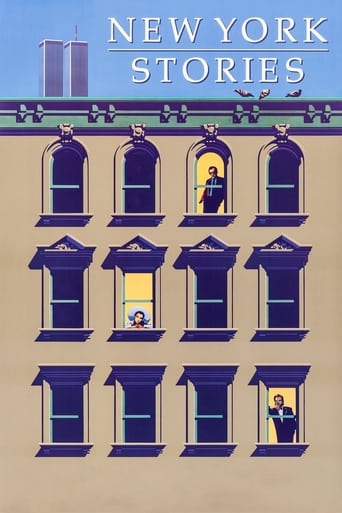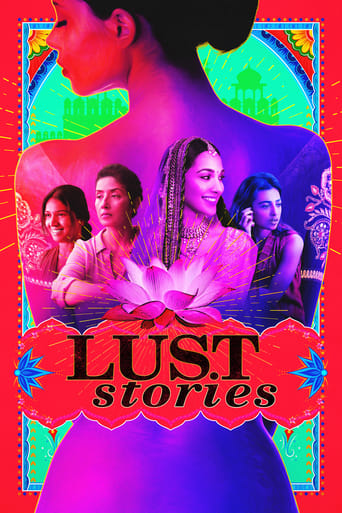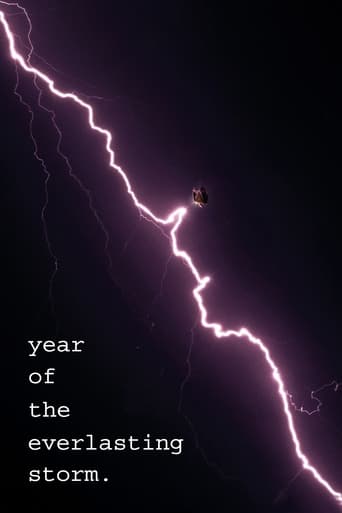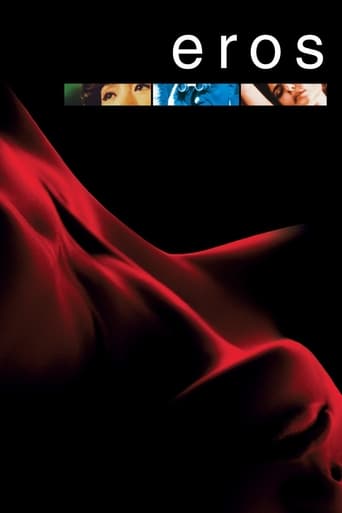
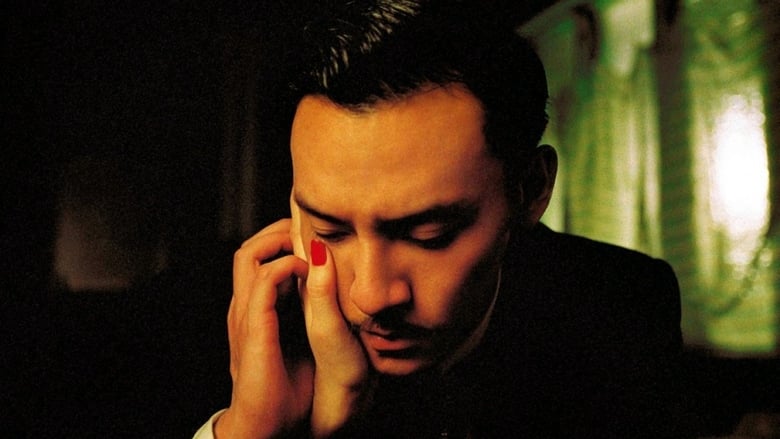
Eros (2005)
A three-part anthology film about love and sexuality: a menage-a-trois between a couple and a young woman on the coast of Tuscany; an advertising executive under enormous pressure at work, who, during visits to his psychiatrist, is pulled to delve into the possible reasons why his stress seems to manifest itself in a recurring erotic dream; and a story of unrequited love about a beautiful, 1960s high-end call girl in an impossible affair with her young tailor.
Watch Trailer
Cast
Similar titles
Reviews
Very very predictable, including the post credit scene !!!
I don't have all the words right now but this film is a work of art.
An Exercise In Nonsense
All of these films share one commonality, that being a kind of emotional center that humanizes a cast of monsters.
This is one of the most encompassing films I have seen in a while. Not because we have a chance to savor at once three masters at work, no. Opinions of their mastery will differ after all. It matters because we have three master fiddlers on the same stage, liberated from the pressure of exerting control over the logistics of an entire project, so each one can singularly shape his present moment from his corner of the stage, a small rhythm, trusting the others to compliment and intone. So even though each segment is structured within itself and harmonical, the whole echoes with the assymetry of spontaneous creation. Wonderful.So three shorts about eros; albeit not erotic in the sense perhaps inferred by the title, not strictly sensual, rather about the desire to see in that space where the senses come into being. All three are highly architectural essays about that space. All three are about some ineffable palpitation of the heart growing fonder, beating faster. All three improvise transcendence.The structure of the thing we can attribute to our conventional film culture that always waxes vaguely about the abstract (Antonioni), treats narrative engineering as a subject of dry, academic discourse (Soderbergh), and is generally more comfortable to evaluate memories of beauty and touch (Wong Kar Wai).I am going to write about these last to first, which is also how they resonated with me.The last segment is typical Kar Wai/Doyle fashion, unfolding down the corner from In the Mood for Love; so flowery, arrested breathing, quietly exasperated romance with the musky scents of intimacy in close quarters. Of course Mood only blossomed in hindsight of 2046, and there is no chance for that here. So we get a simple beauty about a simple yearning; a young tailor falls for an elegant woman, both strangers. He measures love for her as the silky fabrics he creates to encase her. She constantly eludes him. All that is finally left is a moment suspended in time. It's okay but the least here for my taste, a matter of some poetry.Soderbergh for the middle part. Free from the eyes of Hollywood money-men, he creates what he does best and has repeatedly nested in his more famous stuff; New Wave from the gaps of multiple planes of seeing. A man is recounting to his psychiatrist a recurring dream about a woman, who unseen by his patient all this time keeps looking out the window with a pair of binoculars. The whole thing is set in the 50's and aptly recalls film noir as a shorthand, there are venetian blinds, hats, shadows. Most importantly noirish, a double perspective looking to apprehend the controls of nightmare (or dream as in our case). The update, a French touch: a third layer at the last moment, the base layer of reality last. Piled on that we have the dream about the woman, purely sensual blues, and the mind inbetween, the Rear Window vignette with the psychiatrist, seeking the mechanisms that control these images. He finds inspiration in the dream to apply in real life, a new motto for an alarm clock, and comes to realize who is the elusive woman. Wonderful, structured stuff.Finally going backwards we have Antonioni on his last work, the one master two or three notches above the rest and again wildly misunderstood. Several viewers have commented that his segment is little more than the sexual fantasies of a dirty old man. What narrow-minded bunk. What poor reading skills. To even think that Antonioni would have to grow to be 90 to peek at pert nipples. Oh, there is a shot of a woman standing up on a bed fondling her privates, and more nudity; but it's a fantasy only if you completely miss the shot immediately after that posits the whole structure of the house as this woman of mysterious architecture. No, what we have here is another contemplation on the cessation of self from Antonioni's large contemplative tradition.You may have noticed that he all but disappeared after The Passenger. There was the stroke and all that. But beyond that, there was nowhere left to go. He had achieved the utmost that film can aspire to be to my mind; sensing in the present purely with the eye, a full awareness of the world as it comes into being and vanishes again. There is nothing more.So for his part, he films one last time for old time's sake. He takes us on a reminiscing tour of earlier films as though saying goodbye to the whole thing soon to vanish; a couple wandering the ruins of an affair breaking down (L'Avventura, La Notte), youth bathing naked between rocks (Zabriskie Point), the towering old house (a monastery in L'Avventura, where bells were rung), the sense of a concave reality (Blowup).So the man takes off to explore this other woman, new sex with her that could rejuvenate a life of exasperation. Of course simply pursuing blind new desire is not the answer, so he disappears from the film. The two women meet on an empty stretch of beach.Antonioni being the wisest of the three, is the only one who leaves us with something tangible to attain. Film doesn't have to be highly complex to be insightful. It can be a simple passage, no more than a woman dancing naked on a beach. The parting shot sums an entire life in movies, a sage's life. The two women standing next to each other, a little apart, not touching, but aware in each other's presence and their shadows connect. It's the most sublime last shot any filmmaker graced us with.-Kar Wai, segment The Hand: 5/10. -Soderbergh, segment Equilibrium: 8/10. -Antonioni, segment The Dangerous Thread of Things: 10/10
"Where is the thread now? Off again! The old trick! Only I discern the infinite passion, and the pain, of finite hearts that yearn." – Robert Browning"There are no sexual relations." – Jacques Lacan "Paint not the thing, but the effect it produces." - Mallarmé "Eros" is comprised of three short films, one by director Wong Kar-Wai, one by director Steven Soderbergh and one by Michelangelo Antonioni. The topic of each film is "love", Wong's film a melodrama about a tailor's infatuation with a woman whose dresses he makes and Soderbergh's involving a zany discussion between an advertising executive and a psychotherapist. The meta-story here, though, is of Soderbergh and Wong's love for Antonioni, whom both cite as an influence and inspiration.Unsurprisingly, Antonioni's contribution to "Eros", "The Dangerous Thread of Things", is the most interesting film of the bunch. Shunning the melodrama of Wong Kar-Wai and the nervous tics of Soderbergh, Antonioni instead adopts a more metaphysical tone. The result is a film which has a lingering, haunting sought of impact.As with many of Antonioni's films, "The Dangerous Thread of Things" is less a love story than an "end of love" story. Our main characters, Christopher and Chloe, are ex lovers whose relationship is coming to an end. The film opens with Chris oblivious to Chloe's posed, naked body. They then spend their day bickering and reminiscing about better times, both simultaneously wishing to be free of the other and yearning for a time when things were right between them. Christopher's solution to their problems is to have immediate sex. "Sex is more than you think it is," Chloe sighs.Midway in the film our couple spy several nymphs frolicking beneath a waterfall, and later see a beautiful woman riding on a horse. Chris pursues this woman, following her to a castle whose walls recall the rocky outcroppings amongst which the nymphs played. Chris enters this castle, stepping into cave-like shadows. There he finds the woman. Her name is Linda, Antonioni's representation of a kind of wild, chaotic, independent, but simultaneously idealised, femininity.Cut to Linda masturbating, alone, on a bed. As she climaxes, Antonioni cuts to a shot in which his camera vacates a narrow tunnel to reveal Chris alone on a rooftop next to a metal rooster (literally a cock). The symbolism here is uncustomarily clunky for Antonioni. Moments later Linda and Chris do have sex, however its anticlimactic and the scene ends with Chris literally worshipping at her feet. He's forever entranced, but dares not to pull at her "dangerous threads". To pull, to investigate further, would be to unravel the whole image. Instead he leaves her there, alone in the castle, lost in his mind space.The film ends with Chloe and Chris speaking on the phone. Time and space separate them, but they wish to reconcile. To fix their relationship. Chloe spies some wild horses in the distance and tells Chris that she needs to go retrieve them. Whilst in search of the untamed horses she finds Linda naked on a beach. In an instant, Chloe is also naked. Their shadows come together, though Chloe's shadow, scrawny and flawed, ultimately overshadows Linda's buxom silhouette. Speaking of this moment (30 years before filming it, in one of his notebooks), Antonioni says it is meant to suggest a confrontation between enemies, but also heartache and a friendship. Antonioni holds the image, forces his audience to think about what he's just revealed. Fade to black.Antonioni directed "The Dangerous Thread of Things" when he was 92 years old, crippled, wheelchair bound and had lost the use of his eyes and voice. The director made two masterpieces in his later years, "Michelangelo Eye to Eye" and "Beyond The Clouds", two of his most powerful, formally beautiful films. Unfortunately "The Dangerous Thread of Things" does not reach these heights. Its sound dubbing is terrible, Antonioni's symbolism is clunky, his lighting plain and the film as a whole lacks the moody, dreamy polish of his best works. Notice these are all aesthetic problems, the flaws of a dying artist unable to muster the energy to command the camera and mould his cast. The actual content of the film haunts, and its the only film in "Eros" which actually sticks its claws into you. Even Antonioni's deathbed works posses an invisible power which few directors can replicate.7.5/10 – This review has focused on Antonioni's instalment, but Wong Kar-Wai's short film is also quite good. Revolving around a tailor and the prostitute he is infatuated with, the film suggests that creativity, or specifically the drive for perfection (the sewing of perfect clothes), is driven by the compulsion to cancel desires or to attain the unattainable. Though doomed to failure, humanity forever strives for what is out of reach. Soderbergh's film is the lesser of the three, though fans of actor Robert Downey Junior may find it interesting.Worth two viewings.
Eros collects three short films by three talented directors. Each director sets his 30 minute story in his native language and country (China, Italy, USA). Each piece is preceded by a 2 minute montage of gently erotic drawings depicting intimate scenes between lovers. These are "film poems" that are required viewing for fans of the directors or actors. "Spoilers" follow.The cover of the DVD may lead you to believe that this is an erotic movie festival or soft core porn. It's not. Each story raises some issues and makes some points about the romantic relationships shared by women and men, but there is only one brief sex scene.The first segment, THE HAND, is an accomplishment in short film-making. It is a sublime short story about lust, devotion, and the consequences of prostitution. Set in China, it is beautifully filmed and acted.The second segment, EQUILIBRIUM, is enjoyable for its acting. The story of a man having a dream within a dream, it is a comedic study of the human psyche, and hardly deals with romance at all.The final segment, THE DANGEROUS THREAD OF THINGS, tells the story of a man cheating on his wife and chronicles the disintegration of their relationship. That said, this segment is like being on vacation, as the scenery is breathtakingly gorgeous: forests, beaches, waterfalls, castles, and two women. One woman offers the man companionship and the other sex. Each woman's personality is suited to the task. A celebration of beauty, one hopes that this married couple will realize how good they have it and reconcile.I recommend EROS as a sensitive and subtle study of desire and relationships by talented and accomplished creative teams. Seven out of ten stars.
The problem with omnibus films, in which several directors contribute a segment to a common cause, is inevitably one outshines the others and you are forced to make a choice. Here are three of today's most prominent directors given thirty to forty minutes to expound on the linking themes of eroticism and desire. It is difficult to absorb the vision of one artist let alone three cinemasters, especially when two are not performing on all cylinders.The project was initiated by Stephane Tchal Gadjieff, producer of Antonioni's last feature, "Beyond the Clouds." Partially paralyzed from a stroke, the legendary director was still eager to continue making films. Inspired by his devotion, Gadjieff devised a trilogy focusing on the subject of "eros." According to the press notes, "The concept was to have two major young directors, who have been on record to say that they have been influenced by his film-making, accompany him. Each would do a segment on the erotic subject of their choice...Also, we wanted Antonioni to tell us near the end of his life what 'eros' was to him." After considering numerous candidates, Antonioni settled on a pair of diverse talents. His admirers of choice were Wong Kar Wai, Hong Kong's master of mood and unrequited romance ("In the Mood for Love," "Days of Being Wild") and Indie-darling-turned Hollywood-heavyweight Steven Soderbergh ("King of the Hill," "Ocean's 12").When assembling a trilogy film, rule of thumb generally centers the weaker of the three passages while saving the best for last. "Equilibrium" received proper placement. In terms of everything from concept to execution, Soderbergh's segment is far outclassed by his colleagues'. With a patient's back to him, how does a bored shrink pass the fifty minutes? The director took great delight in building a tale of eroticism around Alan Arkin and Robert Downey, Jr., but the yuk stops there. Arkin is very amusing as the scoptophiliac psychiatrist who sneaks peeps in-between Downey's catharses, but it's a one-joke concept that at 27 minutes goes on far too long. Animation guru Tex Avery's paranoid masterpiece "S-h-h-h-h!" made better use of similar material, plus adding a mood paranoia, at one-seventh the length.Although built around him, for the sake of structure and pacing, the film should have opened with Anotonioni's segment. Co-scripted by lifelong collaborator Tonino Guerra ("L'Avventura," "Blowup"), "The Dangerous Thread of Things" has been described as a "mental adventure." Carlo di Carlo, curator of Italy's Antonioni museum, says, "Antonioni wonders: is a film born first in response to an intimate need of its author or are the images destined to have a value - ontologically - for what they are?" A brilliant notion (would one expect anything less of the director?), but given the allotted time, were it not for Mr. Carlo's guidance, I never would have been aware of this concept.An American and his Italian wife are so bored with each other that they barely notice the beauty of Antonioni's surrounding landscapes. He doesn't seem to care that she strolls through town in see-through attire. A beautiful young girl enters the picture, the plot vanishes and we spend the rest of the time focusing on textures both man-made and of the flesh.Wong Kar Wai's opening salvo is so powerful that it dwarfs everything that follows. Inspired by the SARS epidemic, the director fashioned his segment around "the act of 'touch.'" Once again Kar Wai's scorching, rain-soaked summers are painstakingly brought to life through cinematographer Christopher Doyle's unforgettable lensing. Chang Chen plays a nervous tailor's apprentice sent on his first solo fitting. Miss Hua (Gong Li) is a legendary concubine who strips the boy down, gives him hand release and instructs, "Remember this feeling and you'll make beautiful clothes." Years pass and even after countless fittings, the subject of their first encounter is never breached. The shame of listening to Miss Hua's sexual encounters each time he waits for their appointment only adds to his excitement. When sick and sponsor-less, she finally mentions the unmentionable, but her body is no good anymore. "All that's left is this pair of hands. You don't mind, do you?" When it comes to suppressing emotion and establishing mood through style, no one at work today can top Wong Kar Wai.Anyone who saw "In the Mood for Love" knows that these characters don't stand a chance at happiness, but plot is not the point. This is a film where style is not only subject, but substance as well. What he shows you is never as important as how he shows it. His approach is pure cinema, transcending and redeeming even the slightest of stories with the lens of his camera."The Hand" - ********* "Equilibrium" - ** "The Dangerous Thread of Things" - ******

